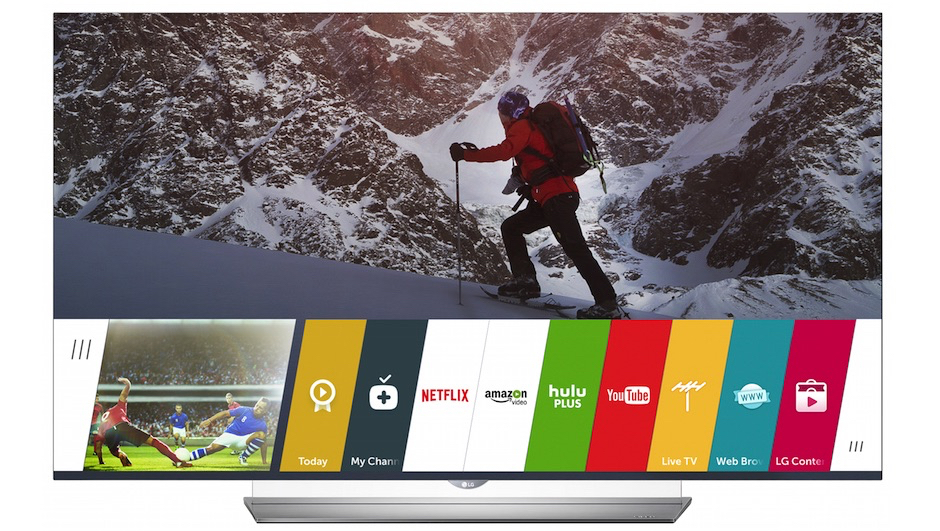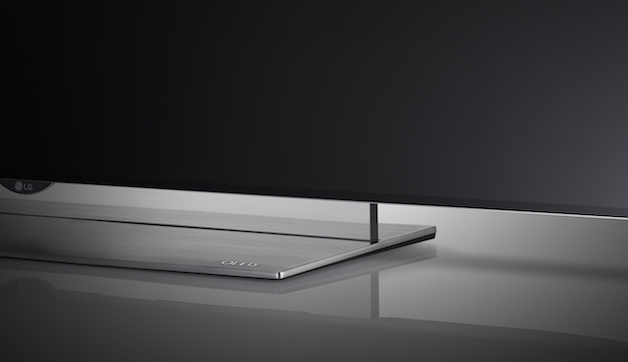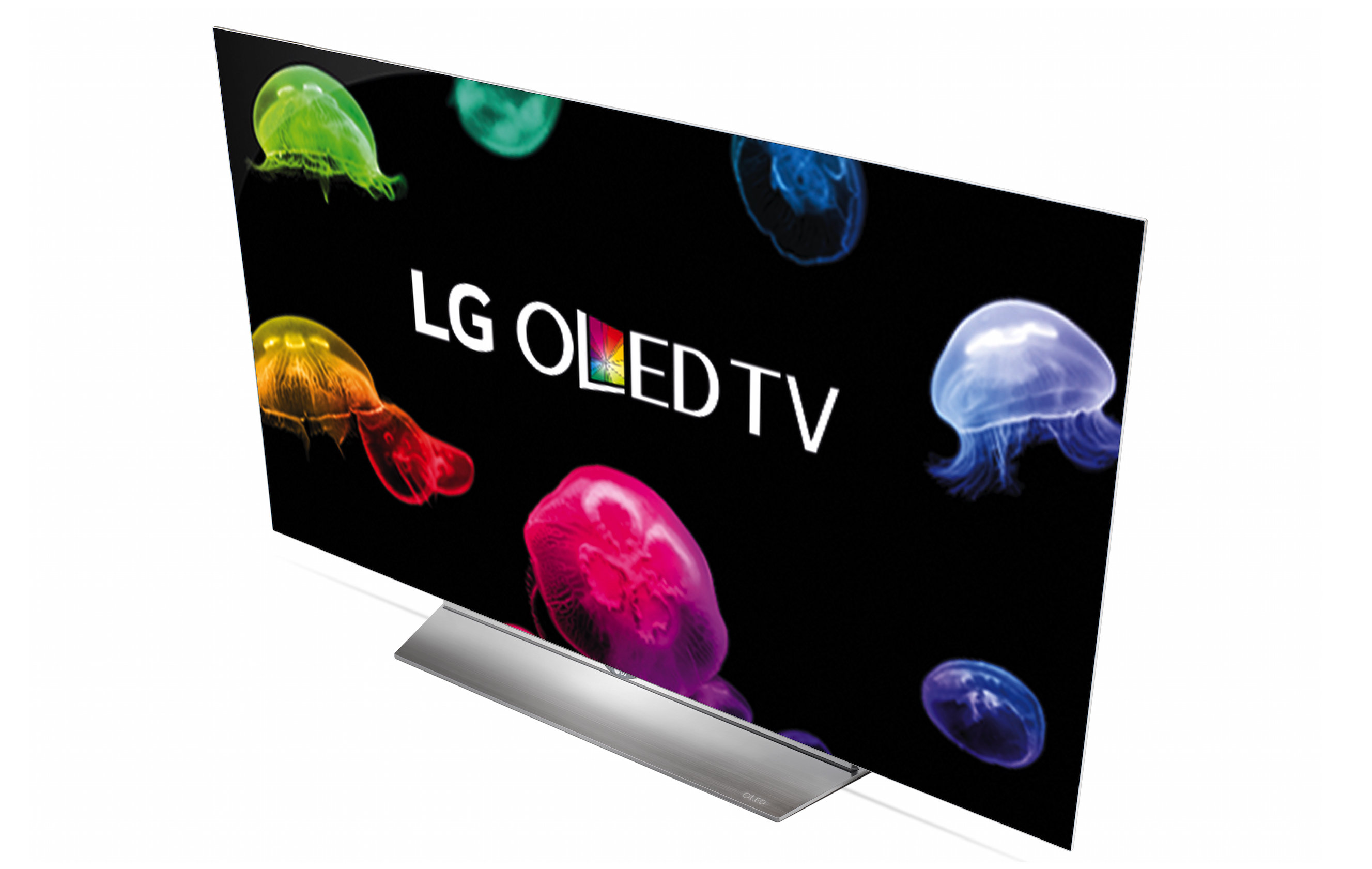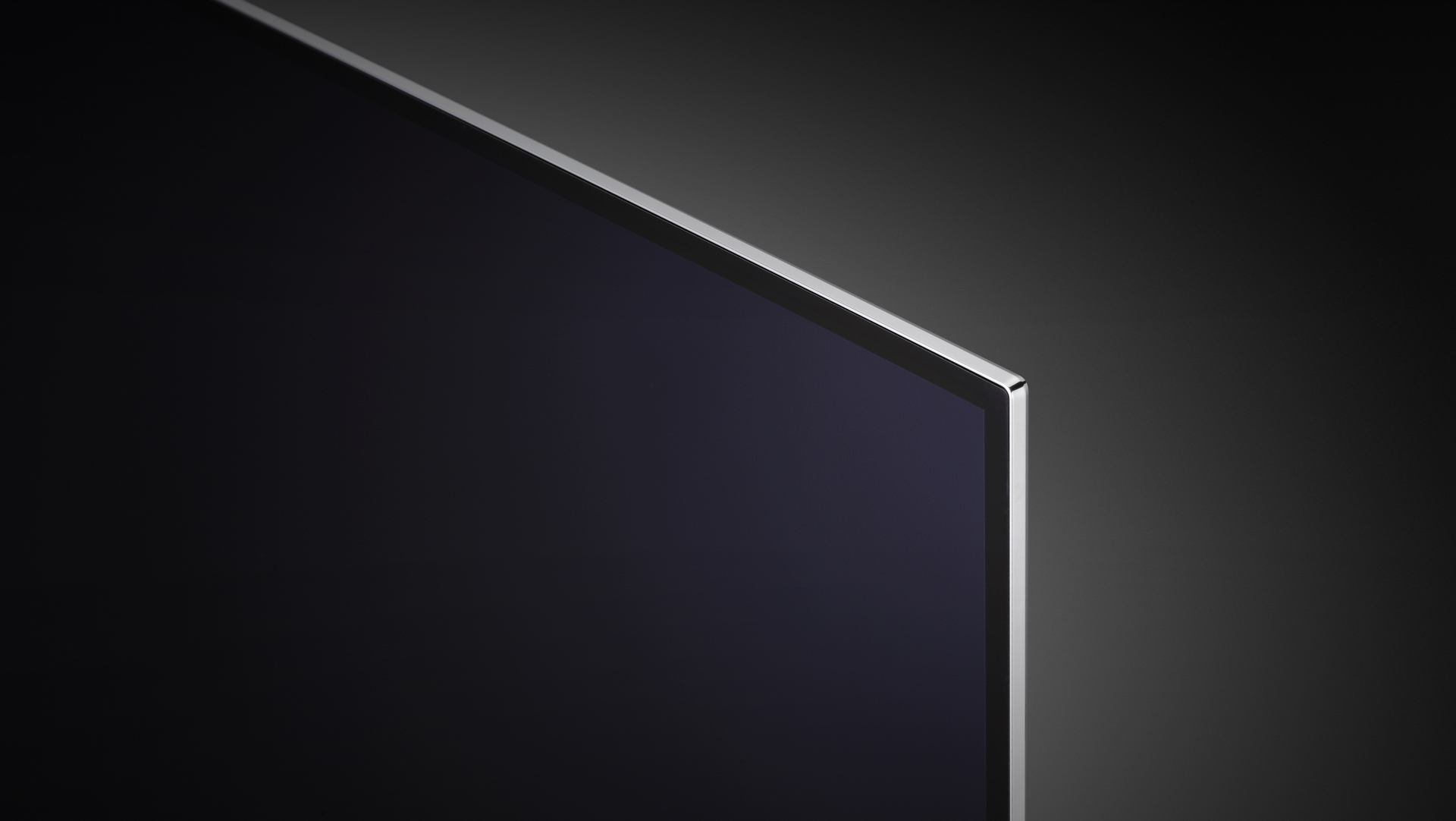LG 65EF950V review: proving you don't need the curve to be beautiful
AV fans rejoice: you can finally you can buy an OLED TV that’s flat rather than curved.


-
+
Astonishing picture quality
-
+
Glorious
-
+
futuristic design
-
+
Excellent webOS smart system
-
-
Slight gradation problems
-
-
Dimming effect at edges
Why you can trust T3

While most things about the OLED TVs that have come our way to date have been pretty brilliant, they have employed one controversial feature that has put many people off buying into LG's next-gen TV technology: curved screens.
Perhaps believing 'going curved' created the sort of futuristic look its trail-blazing OLED technology deserved to be dressed in, LG has previously delivered all of its mainstream 4K UHD TVs with curved screen designs.
Today, though, LG has delivered a blow for AV democracy by finally serving up an OLED TV option that's 100% flat.
In fact, the 65-inch 65EF950V seems keen to emphasise its flatness with its almost miraculously thin rear, and the way the bezel around the screen has been shrunk to practically nothing. This really is one glorious-looking TV - even more so, I'd argue, than LG's previous curved OLED models.

LG 65EF950V: Connections
A protruding section that occupies around a third of the TV's rear houses its connections, which are pleasingly prodigious. Four HDMIs, three USB ports and integrated Wi-Fi cover all the video and multimedia bases we might reasonably expect - especially as the HDMIs are built to the latest standard. That means they can receive new-fangled High Dynamic Range (HDR) video signals as well as native 4K/Ultra High Definition (UHD) content with frame rates up to 60 frames per second.
HDR, if you're not acquainted with it, allows you to enjoy greatly expanded luminance and, usually, colour ranges from specially created content - so long as your TV is capable of unlocking that content's extra information.
As for 4K, I suspect you're already familiar with that one. Squeezing 3840x2160 pixels into a TV screen to deliver four times as much resolution as HD is now commonplace - even if native 4K content might not be as widespread yet as I'd like.
Get all the latest news, reviews, deals and buying guides on gorgeous tech, home and active products from the T3 experts
The 65EF950V does a better job of managing all of today's online, broadcast and multimedia sources than arguably any other brand around today thanks to the glorious simplicity, economy, logic, and customisability of LG's webOS operating system - a system many have tried to copy, but none have yet been able to better.

LG 65EF950V: In praise of OLED
While the 65EF950V's webOS, native 4K resolution and HDR support are all undoubtedly attractions, it's its OLED screen that will really tug at your purse strings. After all, unlike any other current TV screen technology, OLED is capable of delivering individual light and colour from every single pixel in a screen.
There's no need for large areas of pixels to share an external light source.
As a result, OLED has the clear potential to deliver levels of contrast and detail that other screen technologies cannot - potential that I'm happy to say the 65EF950V delivers on in spades.

In an era where we're now used to having to manage problems during dark scenes on LCD TVs - like general greyness or patches of uneven backlight clouding - there's really no overstating how glorious it is to be able to see dark scenes enjoying the sort of beautifully rich, nearly flawless black colours the 65EF950V can muster.
Especially as these inky blacks are rendered without the sort of detail-free hollowness in dark areas that any current LCD TV would have to suffer if it tried to get even close to the black level performance the 65EF950V seems to deliver so effortlessly.
LG 65EF950V: Stellar contrast and colour
As well as delivering lots of subtle detail in even the darkest picture areas, OLED's self-emissive pixel approach also means that it's possible for extremely bright picture elements to sit right alongside nearly perfectly black ones without a hint of light bleed between the two. Something that again just isn't possible now with LCD technology.
You usually find that the TVs which deliver the most effective black level performances also produce the richest looking colourscapes - and this trend continues with the 65EF950V, even if its colour performance isn't quite as unprecedented as its black level performance.

Tones across the board look gorgeously saturated and vibrant, and this sumptuous colour richness holds good during dark scenes too thanks to the way the screen doesn't have to compromise its overall light output to achieve its outstandingly immersive black levels.
Colours enjoy plenty of detail and naturalism, too, thanks to the screen's native 4K resolution and strong video processing, while the combination of all the 65EF950V's stand-out contrast, colour and detail features helps it deliver images of mesmerising depth and solidity. It's common to hear people seeing OLED in action for the first time - especially with a native 4K source - saying that it looks like 3D, even when it's only 2D.
And it really does!
LG 65EF950V: Flat is best?
Personally I love the fact that the 65EF950V delivers its OLED thrills on a flat screen, too. Not having to worry about those twin curved TV issues of reflections distorting across more of the screen and picture shaping issues when watching the TV down its sides comes as a palpable relief - especially given the potential of distorted reflections to get in the way of your enjoyment of those fit-for-a-king black levels.
There's been speculation that OLED technology might not be as adept as LCD technology at handling the relatively extreme demands of HDR. But at least some of the admittedly limited amount of HDR content I was able to pipe into the 65EF950V suggests that OLED could be many AV fans' screen technology of choice for HDR.
LG 65EF950V: Unlocking HDR
Yes, the 65EF950V doesn't render HDR with nearly as much brightness as you get with headline LCD acts like Samsung's JS9500 and JS9000 TVs. But the fact that it can clearly deliver a richer colour response and enhanced luminance range without - usually - losing a grip on those lovely black levels shines a harsh spotlight on the sort of clouding and greyness issues that can affect LCD screens when they're driven hard by HDR content.
Why did I include the word usually back there? Because, perhaps inevitably, the 65EF950V isn't completely perfect.
As with other LG OLED TVs I've seen it exhibits a strange tendency to abruptly start losing its trademark peerless black level depths to strong amounts of greyness when the image is driven hard - either by someone pushing the brightness too high (anything above the 52 setting starts to cause the issue to appear commony) or because some HDR content is driving the screen to extremes beyond its comfort zone.

LG 65EF950V: Minor flaws and more good news
Another even stranger flaw is the tendency for the image to look slightly darker at the edge the screen than it does in the centre.
However, this issue is less aggressive than it has been on LG's previous curved screens and, like the 'jumping blacks' issue, you can reduce the edge dimming effect by running the TV on a relatively low brightness.
While this duo of little issues certainly leave LG with something to work on for future OLED generations, though, they don't occur often enough or aggressively enough to count as a deal breaker in light of everything the 65EF950V gets sensationally right. Provided you're careful how you set the TV up.
Its blistering 2D performance is joined by a beautifully crisp and punchy 3D image and some surprisingly robust sound considering how little bodywork the speakers have to work with.
LG 65EF950V: Verdict
By the time you've added to all of the 65EF950V's performance attractions a ground-breakingly cheap (for a big-screen OLED) price of £3,999, you've got not only the best TV LG has ever made, but a prime contender for the title of best TV ever made, period.
John Archer has been testing TVs and AV gear for over 25 years, having worked on Home Cinema Choice magazine. He's a contributor to Forbes, TechRadar, Trusted Reviews, Wired and many more places – if you've owned a TV in the last couple of decades, John's probably reviewed it somewhere. He's seen so many hot new technologies come and go, like tears in the rain.
